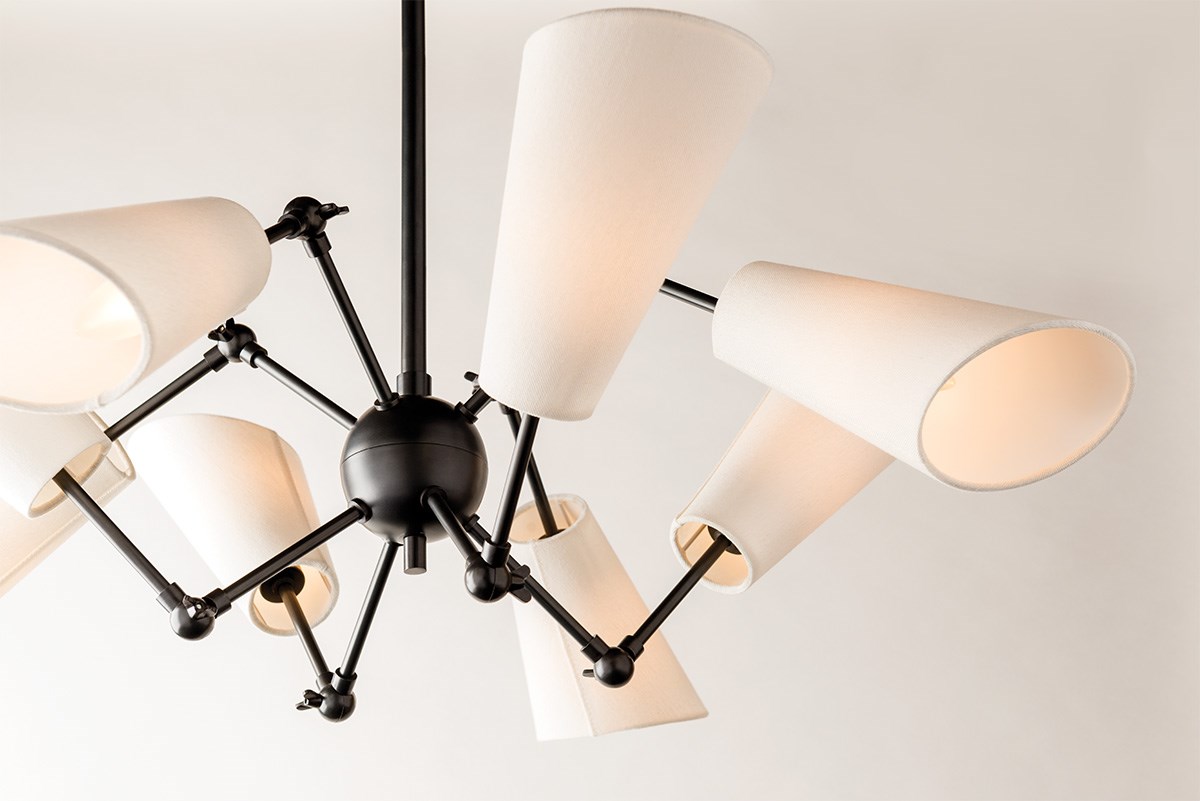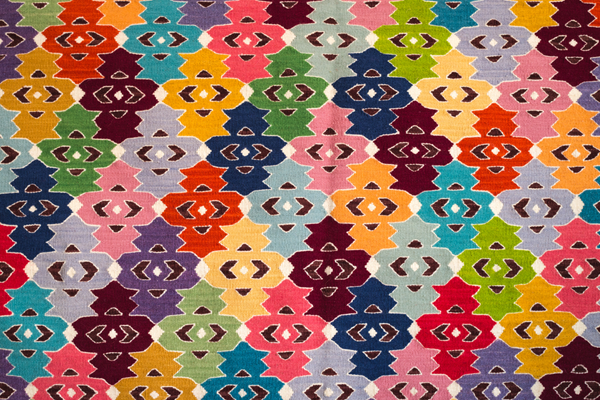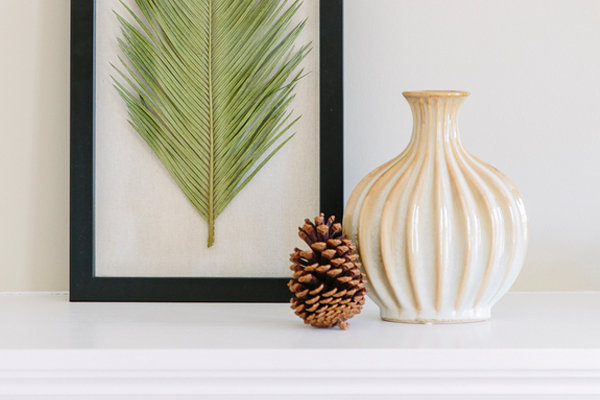Welcome to Morocco
Step into Marrakech, and you enter a city of chaos and noise and no traffic lanes and people flying around on all modes of transport at all angles. If you're American or European, it may feel far, far away from the world you've known. Getting out of your taxi into Jenaa el-Fnaa, you may as well be a million miles outside your comfort zone.
The sun beats down on soil rich with red clay and everything looks washed out, almost sepia. But within this initially disorienting and even dreary picture is a wealth of inspiration, color, and culture. The city and its surrounding country have influenced fashion and interior design for the past fifty years.
Marrakech is called "the hidden city" for a reason. On a superficial level, it doesn't map to conventional standards of beauty. But within the greater city of unraveling monochrome lies a hidden city, just through that door, just around that corner, a secret garden of awe-inspiring beauty, drenching color, and entrancing pattern.
Most things are old and crumbling and walled away with miles of the same red brick of the ground. But get into any courtyard, behind any nondescript door, and you're plunged into an oasis.
Today's interior design trends emphasize color, patterns, geometric forms, interesting textures, and worldly nonorthodox eclecticism. All of these things have long been visible in Marrakech and the nation in which it's rooted: Morocco. The country's textile and architectural art is like a hub from which all of these design trends are the spokes to the rim of the wheel of today's taste.
We thought it might be interesting to examine how or why this happened.
A Little History
Morocco, and its famous city, Marrakech, is a place with amazing, far-reaching history. Oceans of humanity have moved through it. People have lived there since before 90,000 BC.
It's a case study in cultural diffusion. Its indigenous people are called Berbers, though their own name for themselves is the Imazighen. They've endured, as has aspects of their culture.
Here are just some of the people who have occupied this same spot of land:
- Proto-humans related to European early modern humans
- The Roman Empire
- The Vandals
- The Visigoths
- Umayyad Muslim Arabs
This last group invaded in the seventh century and has remained since, most profoundly influencing the culture. There's also been a heavy French influence. A 1956 protocol granting idependence opened the doors for the Western peregrination that lead to its current widespread influence.
To this day, the overwhelming majority of the population practices some form of Islam. This has everything to do with its distinctive art. The dominant religion has as one of its edicts that one cannot portray faces of the divine.
The artistic impulse, limited in this way but still containing a sense of religious awe, was sublimated in the form of patterns. From entrancing mosaics full of colors to wooden carvings of incredible precision, these glorious patterns are inherently pleasing to look at, while also hinting at transcendence.
Wandering Westerners
While Marrakech has always been a captivating destination, in the twentieth century it cast a romantic allure on the Westerner. Beats like William S. Burroughs and other writers like Paul Bowles took root in Tangier, another hugely important Moroccan city where various cultures came together. The Rolling Stones also stopped there awhile.
Artists, models, and intellectuals began to seek sanctuary in Marrakech and other Moroccan cities in the sixties. Hip singer-songwriters also sought solace in its culture and climate, so different from what they were used to in Europe and the States. Crosby, Stills & Nash's sixties hit, "Marrakesh Express" is just one famous example. Bianca Jagger and Andy Warhol upped the glam factor. Throw in Casablanca and you've got an irresistible destination for the romantic Westerner looking for inspiration and change.
This infusion of high-profile figures from the fields of Western art, music, and literature added prestige to the already long-blooming capital and made it a beacon to the ennui-sodden.
But the country (and Marrakech in particular) gained a cultural cache for creatives when a visionary of the Paris fashion world made it his home away from home.

Portrait of Yves Satin Laurent by Jeanloup Sieff, 1971
From Paris to Marrakech and Back Again
Yves Saint Laurent and Pierre Bergé visited Morocco in 1966 for the first time, staying in Marrakech. Saint Laurent designed the clothes that made his brand a symbol of luxury and inspiration. Bergé was his partner both in business and in love, managing many of the pecuniary and administrative aspects of their fashion empire.
They found an earthly paradise in the breathtaking Jardin Majorelle, with its gardens and waters walled off from the city proper and its villa in unforgettable blue and yellow. It was going to be replaced by a hotel in 1980, so they bought it, in an effort to preserve it as long as possible. As Saint Laurent and Bergé bounced back and forth between Paris and this, their home away from home, it continued to serve as an eternal spring of inspiration for the world-renowned fashion designer.
What Saint Laurent found here, in fact or fancy, made its way into his fashion, and circulated thence through the worlds of high-brow culture, haute couture, and the movies.
Legendary art collectors, he and Bergé amassed an awe-inspiring collection of art native to the country. Their villa is now a museum to the creative expression of the region's indigenous peoples. A museum about Saint Laurent is scheduled to open alongside it in 2017.
Visitors to the cobalt blue Art Deco villa have described the power of its presence and its vibrant color as a physical experience. You can feel it on your skin, being absorbed like a nutritive, like sunlight. Inside, patterns native to Morocco adorn the walls and elsewhere. Endlessly entrancing, they transcend trends, transcend time.
The photographer of Saint Laurent's hidden villa, above, on his experience there: "The Jardin Marjorelle was like many other things in Marrakech. A hidden gem behind an utterly nondescript facade. The blue was hyperreal, with the yellow flowerpots and things it looked like a cartoon come to life. Like it was photoshopped directly into my life. It's the most surreal building I've ever seen."
Interior Design Falls in Love with Marrakech
The world of fashion often informs or intersects with that of interior design. Fortunately, the latter is not quite as moment-bound as the former. Bergé recently remarked:
"Fashion is so very fragile, you see. Really, what it is is a moment between the past and future, and it has to encapsulate the present—that has not changed and never will."
Morocco's richly patterned past has been appropriated by today's designers and it stands to keep going strong into the future. And why not? When you enter the door at home, you should feel happy, relieved. A calm and collected energy should easily move through you. We're discovering how colors and patterns can contribute to that sense of well-being; it's something the Imazighen and other Moroccans struck upon long ago.
Patterns enhance the everyday. Something like this Kohler Marrakesh design on Camber undermount sink (from Hudson Valley boutique hotel Glenmere Mansion) turns a banal task like washing one's hands into an opportunity to meditate and be nourished by beauty.
In recent years, many people visiting the city have been inspired to take a new direction in their life and start a business adventure.
One woman, Maryam Montague, decided to live there. She's made the place not only her home but her business. This began in 2007 with her blog, My Marrakesh, which grew to be so successful, she wound up writing an eye-popping book, Moroccan by Design. Her company, M. Montague, sells authentic Moroccan-made goods, channeling profits back into the community. In addition, she set up a hotel, Peacock Pavilions, in the city.
Caitlin and Samuel Dowe-Sandes decided to leave their hectic lives in LA for a year retreat in Marrakech. Two months in, they started a company, Popham Design, making cement tile inspired by local patterns and color-uses, simplifying them to more geometric forms. They also decided to make a home there. Elle Decor did a story on them and this home. Here's their living room, making exquisite use of their own tile and delivering on that go-to word one uses when discussing Marrakech, "oasis."
Detail of Photo for Elle Decor by Richard Powers. The Dowe-Sandes Residence.
Another couple from Sweden started their own business: Marrekech Design. A Remodelista article in their Scandinavian Blues series shared this couple's story and some of their amazing results. This moody blue bedroom makes us want to stay in bed all day.
While this entryway, bringing in a touch of blush, is instantly calming. (We suspect the dog thinks so, too).
The sky's the limit with Moroccan patterns or geometric, colorful patterns inspired by them. You can add a touch, like with throw pillows or a carpet, or you can layer pattern on pattern, set color against color. These colors are revivifying. Using patterns and along these lines, your space becomes an oasis in which to recharge.

What's Light Got to Do With It?
With so many shapes in the patterns, locating a lighting fixture can be an enjoyable challenge. One possibility is to try to echo simple patterns, so that lines chime off one another. For example, something like our Berwick might work in the entryway with the dog above, the rectangle and strong perpendicular angles reflecting off one another, the brass and blush creating a beatiful, muted contrast.
Our Baker's geometric lines, with angles converging into a circle, might also work with a heavily patterned room. A bath that embraces texture and pattern to a Moroccan degree might enjoy our Aurora, as the simplicity of the lines add a foil to the busy-ness of patterns while the shade augments the textural layering factor. Lastly, you might take a page from the Moroccan design playbook and suspend a couple pendants at different lengths; the angles, planes, and textures of Esopus would be stunning.
For more inspiration, check out our Design Center.



















